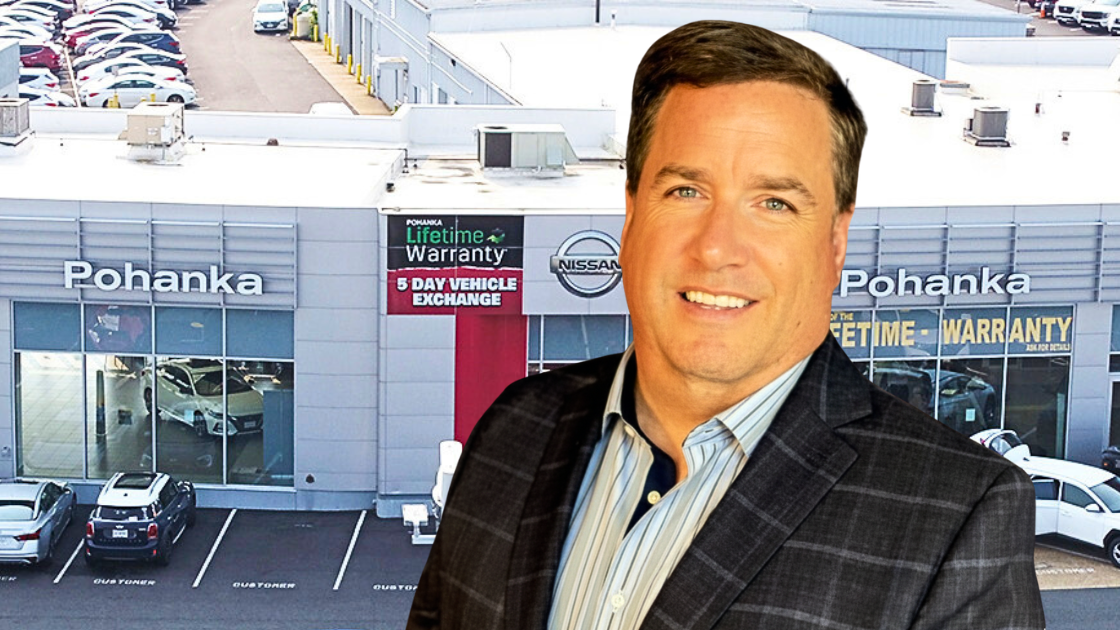
Presented by:
Hey everyone,
For the first time, you can see everything we "do" at Car Dealership Guy — all in one place.
Check it out here.
— CDG
First time reading the CDG Newsletter?
Welcome to the Market Pulse—your no-fluff cheatsheet to auto retail, built to help dealers price right, stock smart, and stay ahead.

Customer-pay work is driving record service volume: Nearly 7 in 10 repair orders are now customer-pay, the highest share since before the pandemic.
Technician output is staying flat: Despite service volume climbing 15% YoY, hours sold per tech are up less than 0.5%.
Staff turnover is cutting into efficiency gains: Technician turnover increased 12% YoY, shortening average tenure to just over three years.
Digital-first stores are pulling ahead: Service departments using automation tools are earning $70 more gross per RO than manual peers.
(Source: Reynolds & Reynolds Fixed Ops Golden Metrics 2025 report)

Maintenance demand is surging, but repair profits aren’t keeping up.
If you’ve spent any time in a service lane lately, you’ve seen it firsthand…customers are hanging on to vehicles longer (avg. 12+ years now), driving record levels of maintenance and repair traffic.
According to a September report from Reynolds & Reynolds, nearly 7/10 repair orders are now customer-pay, the highest mix since before the pandemic.
The issue: This surge in service demand isn’t translating into more $$$ for each store.
In fact, service departments handled roughly 15% more work over the past year, but saw hours sold per technician rise less than half a percent.
This tells us shops are working harder without earning more, which is a major red flag given that fixed ops is one of the few profit centers still offsetting slower new and used vehicle sales.

NOTE TO DEALERS:
Before looking for fixes (which we’ll get into next), try auditing your core service metrics:
Hours sold, effective labor rate, customer-pay mix, and throughput.
From there, find one metric you’re not happy with, compare it to an industry benchmark, and get to work on finding strategies to strengthen that stat.

Tech turnover and outdated processes are fueling lower service profits.
The Reynolds & Reynolds report points to two clear reasons why profits aren’t rising alongside record demand.
First: Technician turnover is up 12% YoY, wiping out many of the efficiency gains dealers made last year.
That’s roughly $15,000 in lost throughput before a replacement is fully trained, dragging down total shop output.
Plus, with fewer experienced hands in the bays, the remaining team often takes on more work, which then results in longer hours, more mistakes, and burnout that drives even more turnover. Brutal cycle to have.
Second: Outdated systems are keeping teams from reaching their potential.
Per the report, digital-first service departments process work 9% faster and earn $70 more gross per RO than manual peers.

WHY IT MATTERS:
The technician shortage isn’t new, and plenty of dealers are taking action, but this report shows there’s still room to take pressure off the people you already have.
For example, consider using digital tools to free advisors from answering 100+ calls a day, or bringing in systems that help techs flag and sell more work straight from the bay.
Most stores still miss on that front, leaving about 1 in 5 upsells on the table, per the report.
A quick word from our partner
Your warranty claims process shouldn’t drain your profits—or your people.
Our award-winning AI technology transforms OEM warranty processing, helping you capture every dollar you’ve earned.
Dealers reduce costs, speed up reimbursements, and uncover new revenue opportunities—while consistently improving OEM claim scores.
The future of fixed ops belongs to those who adapt.

We looked into how some of the top operators are tackling the same fixed-ops bottlenecks holding most stores back, from technician pipelines to mobile service.
Here’s what we gathered:
Do: Build your own pipeline instead of blaming the shortage.
"I don't believe there's a shortage of technicians,” Ed Roberts, COO of Bozard Ford Lincoln, told CDG.

Ed Roberts
“There's a shortage of developmental programs to create technicians. And there are a lot of people who want to do the work, but don't necessarily have a path to get there,” he said.
His point: It’s a pipeline problem. And sure, development programs require upfront investment, but they also create loyalty and reduce turnover costs significantly in the long run.
Do: Consider the benefits that mobile service offers.
“People love convenience, and nobody wants to go to the dealership,” Mike McVeigh, Salesman at David Dodge Chrysler Jeep, told us.
That’s why he argues that mobile service “will replace the lane in 24–36 months.”
Not an insane take, because we’re already seeing it work well for some.
Take Ford of Clermont, part of Morgan Auto Group. They just broke their all-time record in Mobile Service, serving 180 customers in September with only two vans.
“As far as ROI, it’s absolutely there, but you’ve got to earn it. The first few months are about building process and consistency, but once you lock in fleet accounts and plan efficient routes, it becomes a strong profit center,” Fixed Ops Director Fadi Alzeideh told CDG.

Fadi Alzeideh
And he’s not exaggerating.
He said each van now targets around $30K in gross per month, supported by a highly structured operation: territories broken into zones, minimum vehicle counts per stop, and rigorous tracking of every hour.
“We built this program from the ground up with one goal, to bring dealership-level convenience and trust right to the customer’s doorstep,” he said.
Don’t: Set floors that cap growth.
At Bozard Ford Lincoln, Roberts pushes for progression and momentum over single benchmarks/goals.
"I don't have a floor. I have constant improvement. I don't care if you turn 10 hours a week while you're in BTI, but next week you should be turning 15,” he said.

No matter how strong fixed ops demand is next year, if your operations aren’t convenient (for customers, for techs, or for you), profits will keep lagging.
Because convenience is what keeps customers coming back, what keeps techs from burning out, and what keeps the shop moving when volume spikes.
But remember, building convenience takes shipping fast, learning in public, and sharing the wins and the lessons in real time.
That’s how we operate at CDG, and fixed ops should be no different.
If you had to make one fixed-ops move in 2026, what would it be?
Missed yesterday’s episode of Daily Dealer Live?
Presented by:
Starkey on After-Sale CX, DAS Tech CEO on Driving Sales, Ruder on Client Growth
Featured guests:
Tony Starkey, Customer Experience Manager at Bob Poynter Family of Dealerships
Alexi Venneri, CEO of DAS Technology
Chris Ruder, General Manager at Northcutt Chevrolet

Three opportunities hitting the CDG Job Board right now:
Car Dealership Guy: Director/General Manager (Remote)
Tyler Automotive: Automotive Technician (Niles, Michigan)
Bodwell CJDR: Service Advisor (Brunswick, Maine)
Looking to hire? Add your roles today—it’s 100% free.














